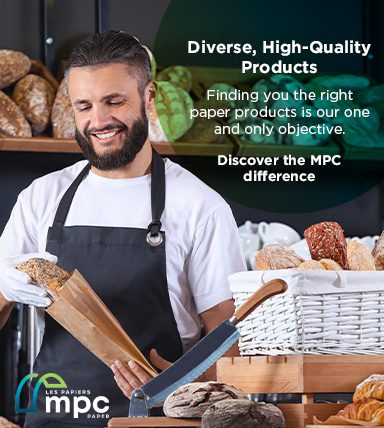“The foodservice and hospitality industry is made up of many Black, Indigenous, People of Colour, and new Canadians, who all contribute to our industry, and it could not function without their input and work.”
Restaurants Canada, in their commitment to inclusion and anti-racism
The meaningful participation of Black, Indigenous and People of Colour (BIPOC) goes beyond numbers. It’s also measured by more nuanced matters of inclusion, such as their representation at higher levels in the workplace and the quality of their work experience.
Understanding barriers to inclusion and their impact on BIPOC
The first barrier to inclusion is the attitude that barriers don’t exist. Restaurants Canada states: “… the belief that there is no racism, discrimination and hatred within our industry is in itself a barrier to addressing it.”
Christina Veira, Bar and Beverage Curator for Restaurants Canada, General Manager of Bar Mordecai, and a Spirits Educator with WSET (Wine and Spirits Education Trust), says that inclusivity issues in foodservice don’t exist in isolation from broader society. “We like to think in hospitality of racism or sexism as being something that exists outside of our places that is brought in, either by guests or by certain elements. But I actually think it’s best to think of it being in our restaurants or bars or hotels as reflective of the general society.”

Trevor Lui, restaurateur, cookbook author and co-founder of the agency Quell, identifies the lack of clear paths of succession as an obvious barrier. He says, “If you take a look at the backbone of our industry, it’s generally the BIPOC community, immigrant community, and first generation of new Canadians doing the most labourious work.” He asks what a young dishwasher who wants to be GM one day sees when they look all the way to the leadership at the top. “If there isn’t someone who looks like someone like me and understands what my journey is going to be like, that path is not very clear.”
Veira notes that many establishments point to the diversity of their staff, but asks, “Does that translate to the various levels in your company, or does it tap out at the bottom or mid level?”
Lack of BIPOC involvement in inclusion discussions is also an issue. “What we cannot have is isolated discussions at a boardroom table, at the highest levels, about how to improve diversity and inclusion when you have no diversity at the boardroom table,” Lui says.
Misconceptions about merit are also barriers to BIPOC inclusion. “We don’t want to be given something as a token because we’re of colour and companies are looking to be more diverse,” he adds. “What we want people to understand is we have merit first. And so, I should qualify from my skillset first, but do not exclude me from the process because of my colour.”
“One of the biggest barriers is for organizations to understand what the barriers are for people of colour.”
Trevor Lui, restaurateur, cookbook author and co-founder of the agency Quell
Lui says, “One of the biggest barriers is for organizations to understand what the barriers are for people of colour. So, before understanding where an organization needs to be, the organization needs to understand where the BIPOC community and their struggles are on a day-to-day basis.”
Veira says it’s simplistic to look only at the career success of some BIPOC individuals as a hallmark of inclusion. She says this negates that they’ve had to navigate barriers and negative interactions that others, such as white males, don’t necessarily face. As an example, she speaks of the assumptions that suppliers and guests may have about the knowledge or competence of BIPOC in front-of-house roles:
“It’s not that there are not Black somms [sommeliers]. There are many Black somms. There are many good Black somms. There are many incredibly talented Black somms. But the average even very good Black somms often have a much higher barrier for success at a table because they battle against people’s stereotypes, against people’s expectations of what their knowledge level would be, even when it comes to their ability to upsell. They’re more likely to be seen as potentially scamming a table.”

What can the foodservice industry do to address BIPOC representation?
+ Review your HR practices.
Both Veira and Lui identify the need for restaurants and bars to review business practices such as hiring, training, and promoting staff, not only from a legal perspective, but also through the lens of inclusivity.
For example, Veira asks if restaurateurs consider that guest complaints against BIPOC staff may be informed by racism. She says, “It’s not necessarily being distrustful of everyone that enters, but you have to be able to look at all your interactions in a way that is protecting your staff and acknowledging [the tensions involved in] creating an inclusive environment in your place in a society that is inherently not inclusive.”
+ Review and audit your processes.
Lui says that BIPOC individuals should be included in discussions about addressing diversity and inclusion. He also suggests that you be open to engaging outside agencies such as his to perform audits on your processes and assist you in moving toward a more positive work environment.
+ Be truly inclusive, avoid tokenism.
He cautions against tokenism, like only including BIPOC in your marketing campaigns during occasions such as Black History Month or Lunar New Year. He says you need to “look within your organization to see how you can sustainably create a greater vision of what I would call authentic diversity and inclusion.”
Veira notes that embodying diversity and inclusion has benefits for guests too. She says that many people, especially from identities where they’re used to feeling unwelcome or that they have to build themselves up to enter a place, will see that and connect with your establishment as someplace they can easily go.
Learn more, do more
- How to Create a Positive and Inclusive Workplace, with complementary information sheets, by Restaurants Canada in partnership with Centennial College
- Inclusive Kitchen: Tackling Systemic Racism presentation at this year’s virtual RC show from February 28 to March 3



